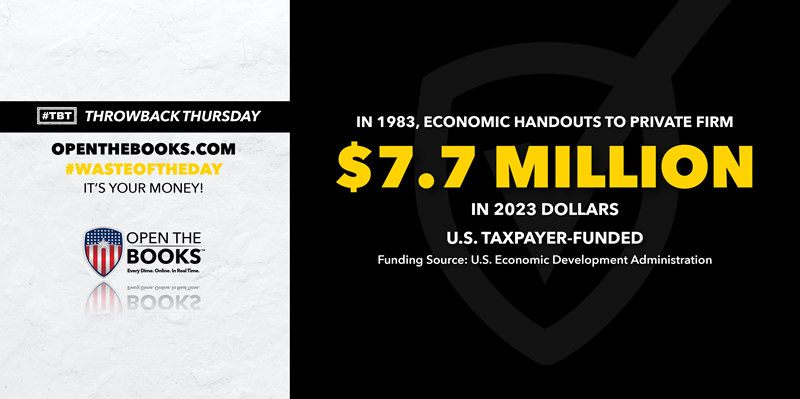
Social Security Overpaid $26.3 Billion, Asks Retirees For Money Back
October 23, 2023

The Social Security Administration has made billions in overpayments in recent years, with the total balance standing at $26.3 billion at the end of fiscal year 2021, according to an Inspector General’s report. Now, the SSA is sending bills to retirees in an effort to recoup their overpayments.
The report found at the end of fiscal year 2021, the SSA had recovered $4.7 billion in overpayments, but still had $21.6 billion in unrecovered overpayments.
While the administration maintains that these figures are not as bad as they sound, given the over $1 trillion in benefits payments it distributes annually, the inspector general found that 73,000 overpayments costing $368 million resulted from a lack of effective controls over benefit-computation accuracy.
Now, the SSA is on a mission to reclaim the overpayments. KFF Health News recently reported , “The SSA is trying to reclaim billions of dollars from many of the nation’s poorest and most vulnerable — payments it sent them but now says they never should have received.”
Rebecca Vallas, a senior fellow at the Century Foundation think tank, told KFF, “Overpayments push already struggling beneficiaries even deeper into poverty and hardship, which is directly counterproductive to the goals” of safety-net programs.
The SSA is also not being transparent about its overpayments, denying a Freedom of Information Act request for documentation of every overpayment notice it has sent over several years.
These overpayments have cost taxpayers billions and wreak havoc on retirees who receive collection notices for funds they have already spent through no fault of their own. The SSA needs to be held accountable and quickly stop overpaying.
Miami Officials Under Investigation For Alleged Corruption, Make Combined $348,000
October 24, 2023

Miami’s city government is awash in allegations of corruption, with three of the city’s six elected officials under investigation for corruption, according to the Miami Herald. These three officials receive a combined $348,880 in total taxpayer compensation and perks.
According to the Herald, the mayor and two of the five city council members have been accused of corruption, though all three officials have denied wrongdoing.
Now suspended Commissioner Alex Díaz de la Portilla was arrested and charged with several crimes for allegedly selling his vote for $245,000 in campaign cash.
Mayor Francis Suarez is under investigation by the FBI for allegedly colluding with a developer for $10,000 per month in kickbacks, and former mayor and now commissioner Joe Carollo is under investigation for allegedly holding improper influence over the police force.
According to a 2018 report from the Miami Commission on Ethics and Public Trust, these officials are well paid, and are offered a variety of benefits and perks. The Mayor of Miami receives a $97,000 salary, while commissioners receive $58,200. Most of the commissioners receive taxable fringe benefits worth $46,400. The mayor receives retirement benefits worth $19,400 yearly, while most of the commissioners receive $11,640 in retirement benefits.
That adds up to a total compensation package of over $116,00 each - or $348,000 for these three officials.
With generous compensation packages and benefits like these, it’s disappointing that these officials feel the need to allegedly participate in illegal activities that so poignantly erode the public’s trust in them. While none of these allegations have been proven yet in court, Miami has a lot of work to do to earn back the public’s trust in its elected officials.
Marine Corps Lost $100 Million Fighter Jet For Over 24 Hours
October 25, 2023

The Marine Corps recently misplaced for about 24 hours a fighter jet that cost about $100 million, turning to the public for help finding this expensive, top-secret equipment that they were unable to locate.
On the evening of Sept. 18, Joint Base Charleston made a post on Facebook asking for the public’s help locating an F-35B Lightning II fighter jet lost from Marine Fighter Attack Training Squadron (VMFAT) 501 with the 2nd Marine Aircraft Wing, noting that while the pilot safely ejected during a “mishap,” the jet was missing.
The post asked the public to call 2nd Marine Aircraft Wing Public Affairs Office if anyone had seen the jet.
Over 24 hours later, the plane was eventually found in Williamsburg County, South Carolina, about 80 miles north of where it had taken off, according to NBC. An investigation is still ongoing to determine why the pilot ejected and how the plane flew for 60 miles with no pilot, according to AP.
Criticism from lawmakers quickly followed, with Congresswoman Nancy Mace (R-SC) posting on social media platform X, “How in the hell do you lose an F-35?” AP reported these cutting-edge warplanes from Lockheed Martin cost about $100 million apiece.
The F-35 program, which is on track to cost the government $1.7 trillion over its lifetime, has been plagued for years by cost overruns, delivery delays, and equipment malfunctions since its inception, according to the Government Accountability Office.
With the confusion over the loss of this expensive jet for over 24 hours, it’s no wonder why the Department of Defense has never passed an audit, and why we should be leery of continuing to reward the Pentagon with more money when it can’t manage the assets it has now.
Throwback Thursday: $2.5 Million Handout to Private Company
October 26, 2023

Throwback Thursday!
In 1983, the U.S. Economic Development Administration gave a $2.5 million loan – worth $7.7 million in 2023 dollars – to a private sand and gravel mining firm that violated the terms of the loan by using the money for absurd and unallowable expenditures.
Sen. William Proxmire, a Democrat from Wisconsin, awarded the administration his Golden Fleece Award for this ridiculous lack of oversight.
According to Proxmire, when the $2.5 million loan was awarded to the company, it was meant to be used to invest in the company’s core business operations, like mining. Instead, Department of Commerce auditors found the money was going many places beyond mining activities.
Some of the questionable purchases auditors found included $1.2 million for the purchase and development of land that had nothing to do with mining operations, $500,000 for farm equipment at a failing farm that never turned a profit, and a $500,000 loan to the company’s sole stockholder, according to the auditors.
The company also spent $314,320 on a helicopter for questionable purposes, and $65,000 on a lakeside cabin for “entertainment purposes” that were never specified. All of these expenditures were considered violations of the terms of the loan. After these ridiculous expenditures, auditors warned, “If the owner keeps diverting cash from the company’s operation, financial strains could result.”
Because of the loan violations and the waning financial strength of the company, auditors recommended the Economic Development Administration call in the loan to recoup its investment. The EDA never followed through with the threat, however, after discovering an influx of cash from another government loan that was previously undisclosed.
Companies that take advantage of government funding crowd out investment for small businesses that desperately need it, and waste taxpayers’ money that could have gone toward other important government programs.
The Texas Grid Withheld Electricity, Costing About $8 Billion
October 27, 2023

In Texas, while the supply of electricity was ample this summer, prices soared, costing an estimated $8 billion over three months, The New York Times reported,
These artificial shortages in the Texas power grid were the result of the state’s market operator, the Electric Reliability Council of Texas, or ERCOT, withholding electricity supply from the market to create a reserve, which pushed up prices.
The prices of electricity shooting up helped power companies and people with solar panels who sell their power back, as well as cryptocurrency miners, who are able to take advantage of market fluctuations, The Times reported.
One cryptocurrency company, Riot Platforms, said it made more than $7 million in energy credits in August, the newspaper reported.
Of course, the losers are ordinary Texans who have to pay these high energy costs.
While most Texas consumers have fixed-rate retail contracts and haven’t seen the summer’s high prices yet, an economist predicted they would soon.
The new reserve program came as a result of the backlash over the 2021 winter storm when the power grid couldn’t handle freezing conditions. Blackouts killed more than 200 people statewide, and Gov. Greg Abbott later pushed for changes to prevent future failures.
While the Texas grid has had ways of providing extra electricity during an emergency, the new approach of holding power in a reserve launched in mid-June, where days later, the price spikes were clear.
One man, VJ Arizpe, installed solar panels connected to batteries at his home in Houston last year and noticed a very large jump in the prices he was getting for selling his power. He saw a price curve rising nearly vertically.
“ERCOT’s inability to keep a consistent grid has been really lucrative for me,” Mr. Arizpe said.
While the electric council said the summer’s activity had been “both desirable and intentional,” Tyson Slocum, who follows energy markets for Public Citizen, a nonprofit consumer advocacy group, said “This is a huge transfer of wealth,” The Times reported. “It’s going to end up in user rates at some point.”
The #WasteOfTheDay is presented by the forensic auditors at OpenTheBooks.com.